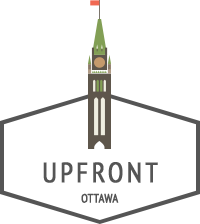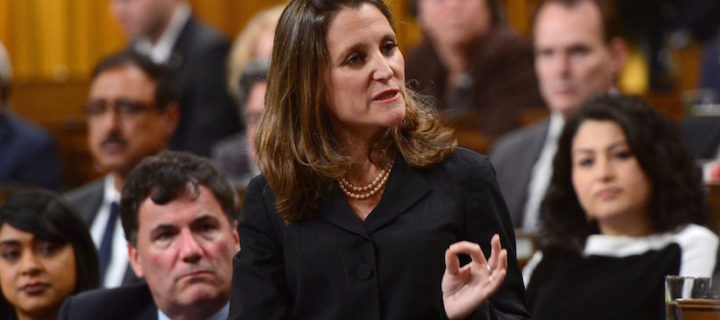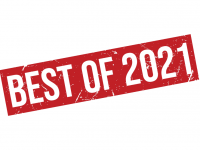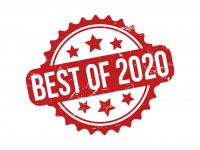Updated July 6, 2017
Photo: From the gallery of Canada’s Minister of Foreign Affairs, Chrystia Freeland.
Since an election promise in October 2015 to replace CF18 aircraft through a non-competitive “off-the-shelf” procurement and an interim fleet to meet NORAD and NATO requirements has simultaneously gone sour in a civil aviation dispute, a brave expression of “Foreign Policy” transition has taken place.
The accompanying Defence Review puts paid to “off-the-shelf,” “off-the-cuff” propositions, or “off-the-wall” characterizations about previous governments and trusted suppliers. It now seems to turn necessity into LIBERAL virtue and accomplishment.
As for transition, Canada’s Foreign Affairs Minister Chrystia Freeland put it plainly: “Canadian diplomacy and development sometimes require the backing of hard power.” This is an acknowledgement not often expressed during the many years previously where soft power, peace dividends and the acquisition of dual use “military” technologies for Canadian niche market developments and competitive advantage were all the “foreign policy rage and influence.”
Diplomats don’t conduct negotiations any longer while an aircraft carrier and strike force are fully visible offshore from the window of a venue full of assembled contrarian factions.
Few if any would likely remember Canada’s aircraft carrier HMCS Bonaventure or the fact it was being refitted to accommodate jet aircraft landings, when the “suitable” McDonnell Douglas CF18s were being acquired, or the company’s subsequent merger with Boeing. Canada scrapped the carrier but bought the aircraft.
Like the F5 Fighter aircraft, the Sea King helicopter and the CF18s face the prospect of becoming a source of repurposed revenue with the help of Crown Assets Disposal Corporation.
As Minister Freeland remarked: “Force is of course always a last resort. But the principled use of force, together with our allies and governed by international law, is part of our history and must be part of our future.”
The “Foreign Policy” shift has taken place, it seems, from “Responsible Conviction” to a reconfigured three Ds: DIPLOMACY, DEVELOPMENT, and DEFENCE. This shift is perhaps a recognition that diplomacy, in general, is by and large 90% reactionary, according to some well-seasoned professionals.
On the Development front, International Development Minister Marie-Claude Bibeau signalled a new feminist policy. There were no new spending commitments for foreign aid, but a reallocation of $150 million in the existing aid budget over five years was made for women’s organizations in 30 different countries. Aid agencies had put pressure on the government to more than double its current annual spending of $5.3 billion to meet the U.N.’s target of 0.7% of gross national product.
Defence Minister Harjit Sajjan’s defence review announced a “new approach” to respecting international conventions, whatever that means. He announced $13.9 billion for more resources and capabilities; perhaps repurposed bucks from the $12 billion the Liberal Government chopped from the defence budget since taking office in 2015 while in pursuit of U.N. Peacekeeping missions and the seat of influence on the Security Council, now to be doled out over the next 10 years, just saying.
The “six- million- dollar” question is: Does Canada’s “new approach” towards respect for international conventions come from pressure exerted by the new President of the United States or to meet NATO contributions targets of 2% of GDP?
The Defence Review has proposed a 70% seemingly robust increases to its defence budget over the next decade, from $18.9 billion annually in 2017-18 to $32.7 billion by 2026-2027, but total forecast defence spending, as a percentage of gross domestic product, is projected to reach 1.4% by 2024.
By comparison, the United States, with whom we have long-standing defence development and sharing arrangements, wants to increase its defence budget in 2017 by $54 billion over the previous administration’s $582 billion expenditures in 2016.
Some Pentagon analysts have projected the increase in hypothetical dollar equivalencies for four aircraft carriers, 570 advanced fighter jets, or 12 Zunet Class destroyers. Such an increase would fund the salary of 2.8 million enlistees, a new ICBM system, or close to three years’ funding for NASA.
In that context, Minister Freeland’s remarks are poignant. “Some think, some even say, we should therefore free ride on U.S. military power. Why invest billions to maintain a capable, professional, well-funded and well-equipped Canadian military?”
“The answer is obvious: To rely solely on the U.S. security umbrella would make us a client state. And although we have an incredibly good relationship with our American friends and neighbours, such a dependence would not be in Canada’s interest,” Minister Freeland said.
“That is why doing our fair share is clearly necessary. It is why our commitment to NORAD, and to our strategic relationship with the United States, is so critical. It is by pulling our weight in this partnership, and in all our international partnerships, that we, in fact, have weight.”
“To put this in sharper focus, those aims are as follows: First, we will robustly support the rules-based international order, and all its institutions, and seek ways to strengthen and improve them.
“We will strongly support the multilateral forums where such discussions are held—including the G7, the G20, the OAS, APEC, the WTO, the Commonwealth and La Francophonie, the Arctic Council, and of course NATO and the UN,” Minister Freeland said.
Referring to the defence review, Minister Sajjan said: “This is a Government of Canada policy, and I’d like to thank my cabinet colleagues, especially the Minister of Finance, Bill Morneau whose tough decisions and understanding of the role of the Forces have obviously been instrumental.”
The foreign policy also talked about the U.S. relationship, withdrawal from the Paris Accord, and a mixture of notional world leadership, current dysfunctions, and a generous dose of Canadian successes past and yet to come. The address was in the context of the current government’s international ambitions and “values,” the preservation and protection of Canada’s interests.
The defence review talked about hybrid warfare, grey zones, drones, airborne surveillance, and intelligence tools, among others. In short, the defence PLAN is to emerge or symbolize: strong, secure, and engaged, operating in a sustainable manner over the next two decades.
The thrust is to provide support for Canada’s troops and veterans, by re-equipping the MILITARY for leadership engagements in NATO operations. The plan will increase the special and reserve Forces recapitalize the Royal Canadian Air Force and Navy. No mention was made of U.N. Missions to Africa.
Today, all recapitalization options are open. Consultations are taking place with industry.
Our closest U.S., U.K., and other European allies are going through major political transitions and alignments, which impact Canada’s conduct in defence, trade agreements, and security matters on a global scale.
There is no coherent Foreign, Defence, Trade and Security Policy.
Obvious current preoccupations are the re-negotiation of the NAFTA agreement and trade with China, India, and CETA. This, in part, exposes Canada defence requirements to foreign and global commercial competitive interests and capital risks, where competitions have political and security impacts on our defence industrial base, the tenets of the Foreign Investment Act aside.
For these reasons alone, defence capital requirements include these considerations and are incremental to planned acquisitions at the budget level. But more importantly, in the U.S.-Canada defence, development, and production agreements, the influences of social clutter and climate change, sustainable green developments, superclusters, infrastructure, and energy frameworks take second place to mutual national security obligations involving “critical” technology transfers.
I recall meeting the Chairman of a major U.S. global company accompanied by a former White House Chief of Staff after the cancellation of the Sea King replacement. Their question was straight forward: “Is there a requirement?” The answer given was: “Yes,” tongue in cheek, and acquisition will be by an open competition.
That’s code for: we are a long way from procurement, allocated-repurposed funding, and cabinet documents to that effect.
The meeting took place in the Tower of LONDON. It was important to seize the reality of that moment. An “off-the-shelf” acquisition on that occasion more than likely would have meant “off with their heads.”
In the case of the defence review, Canada’s budget recapitalization requirements and deliverables are backloaded well beyond the current government’s mandate.
Minister Freeland remarked: “International relationships that had seemed immutable for 70 years are being called into question. From Europe to Asia to our own North American home, long-standing pacts that have formed the bedrock of our security and prosperity for generations are being tested.”
Perhaps a cabinet shuffle would help facilitate a coherent foreign, defence, trade, and security policy as well as identifiable “lead-authorities” with the means for its “execution;” before “Defence Policy” is shelved again or put back together again like many others preceding humpty dumpty reconstructions.
Building a prosperous nation while keeping the best and brightest – our entrepreneurs, companies, and corporations – involves the real risk of migration to greener pastures especially when facing ever-raising taxes, trillions of debt dollars and no sign of a balanced budget until 2055. That is the real elephant sitting on the wall.
Update, June 19, 2017
Former Prime Minister Brian Mulroney’s message to Prime Minister Justin Trudeau: During Keynote Address at the Canada 2020 conference in Ottawa.
Ottawa Citizen Supplement-National Post-John Ivison-June 17th 2017
On trade, “Look around corner of History”- We should keep our Heads Down, Our Mouths Shut….Don’t take the Bait. “We are a $2 Trillion economy. We have the strength to say no”
On Visionary Leadership, look to the next generation, not the next election.
Kevin Murray-Mourne is a former Trade Commissioner for Space, Aerospace, Defence and Security with the Department of External Affairs and International Trade Canada. He is a Veteran of Her Majesty’s Armed forces. He attended the Canadian Centre for Management Development, the Canadian Foreign Affairs Institute and is a Graduate of the American Management Associations Management Program.
Update, July 6, 2017
Ottawa Citizen-National Post Supplement- Lee Berthiaume, 7th July 2017, Liberals taking “prudent” time with fighter jet decision: RCAF Head
Lt-General Mike Hood-Choosing Canada’s next fighter jet is a big decision-especially since it will likely be in use for decades. “The timelines the Government and the Minister have articulated will let them be absolutely sure that they’re making the right choice for a final fighter..”
The Defence Policy estimates the new fighters will cost between $15-19 billion and companies won’t be asked to submit formal bids until next year (2018) at the earliest.
Despite many defence experts and 13 retired Air Force Commanders in February saying a competition should be launched immediately and would negate the need for 18 Interim Super Hornets, save tax payers dollars and keep from having to divert personnel and resources from other areas of the Air Force.
Lt General Hood played down those concerns saying that he’ll have no trouble operating an interim fleet if-“I’m given the resources and the priority that I need”.
He admitted that did not mean there won’t be challenges, notably having enough pilots and technicians to fly and fix the “new jets”. The problem has been exacerbated by the fact that airlines are on a hiring binge and the Air Force cannot ramp up the number of pilots it puts through flight school each year.
Hood is hoping planned changes to the training regime and new initiatives such as recruiting potential technicians directly out of community colleges will help grow his ranks.
The plan to grow the number of fighter jets is only one area the Air Force is slated to grow in the “coming years”. New Armed Drones, search and rescue aircraft and other equipment have also been promised….that represents a significant and welcome turn of events after years of cuts.
Related Links:
Defence Minister Sajjan’s Latest Gap to Fill is the Void Between Principles and Reality
U.S./Canada Relations: Liberals Realign and Adjust from “Bromance” to “World Stage” Trumpism
The Importance of Being Earnest: F35 Thumbs Down, Showdown, Countdown, Decision
F35, IN CAPABILITY GAP BATTLE OF VICARIOUS METAPHORS AND INTERNECINE POLICY SKIRMISHES.
LIGHT ARMOURED VEHICLES ARE TAKING A BAD RAP
The Current Government is Having to Split Political Hairs
Withdrawal of CF-18s from NATO-Led Middle East Bombing Mission
Related Article References
Canada’s oldest and closest allies are barely functioning: Ottawa Citizen-Terry Glavin-June 10, 2017
Indefensible Policy Paper: Grit Defence Review-Ottawa Sun: David Krayden- June 11, 2017
Defence review destined for the shelf– Ottawa Sun David Krayden-June 12, 2017







